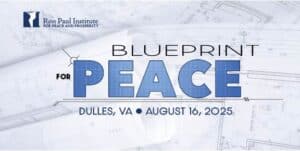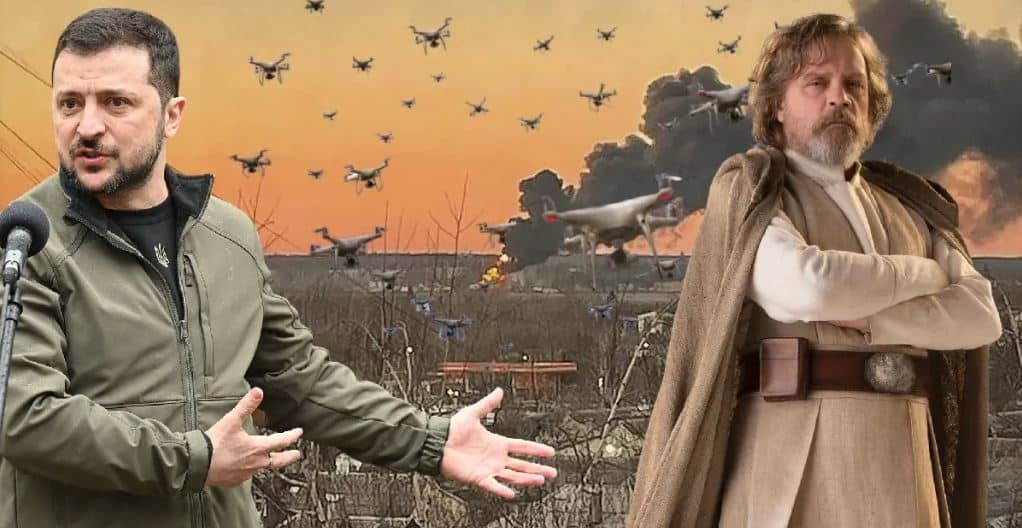
On April 23, a Ukrainian drone laden with 30 Canadian-made C4 explosive blocks crashed near Rudnevo Industrial Park in Moscow. Ukraine-based operators deployed the 37 LB arsenal in a failed bid to assassinate Russian President Vladimir Putin, who was scheduled to visit Rudnevo that day.
The drone ultimately failed to hit its target, crashing roughly 12 miles from its intended destination. Russian media reported authorities discovered three similar unmanned aircrafts in the surrounding area. By the time the Canadian-manufactured bombs arrived in Moscow, the government in Ottawa had provided Kiev with nearly 6 billion dollars worth of aid to support Ukraine’s fight against Russia’s military.
A Ukrainian UJ-22 airborne drone stuffed with explosives fell in the Moscow region. pic.twitter.com/ORTyyM4Edx
— Spriter (@Spriter99880) April 24, 2023
The Ukrainian UJ-22 drone’s flight originated in the country’s Kharkov region. Yuriy Romanenko, co-founder of a think tank with close ties to Kiev’s intelligence services, credited Ukraine’s Secret Service (SBU) with orchestrating the assassination attempt. Romanenko wrote on Twitter: “Last week, our intelligence officers received information about Putin’s trip to the industrial park in Rudnevo… Accordingly, ours launched a kamikaze drone, which flew through all the air defenses of the Russian Federation, and fell not far from the industrial park.”
Путин, мы все ближе
Все видели новость о дроне который долетел до Москвы, но не взорвался? Так-вот, дрон этот летел не просто так. На прошлой неделе наши разведчики получили информацию о поездке путина в индустриальный парк в Руднево. Удалось даже заполучить карту поездки по… pic.twitter.com/F2u8kClhPO
— Yuriy Romanenko (@shan_yan) April 24, 2023
“Putin, we are getting closer,” Romanenko warned.
The drone was carrying m112 explosive charges, which are used by several states including Canada, the United States, and the United Kingdom. According to Russian media, the explosives recovered from the botched attack were of Canadian origin.
The failed attempt on Putin’s life came amidst a wave of drone incursions into Russian airspace in recent months. A day after the unsuccessful April 23 offensive, the Russian outlet SHOT recorded 10 drone attacks in the Belgorod border region, some of which included French LU-213 fragmentation grenades and American-made Switchblade drones. The Switchblade has been used in previous air assaults on the region as well.
The uptick in drone attacks inside Russian territory followed Kiev’s July 2022 launch of an “Army of Drones” campaign, an official effort to raise funds, dubbed “dro-nations,” to assist Ukraine’s procurement of foreign-produced, unmanned aircrafts.
The fundraising push, which counts the Western-backed online troll farm, NAFO, and the Ukrainian World Congress as formal partners, has enlisted famed Star Wars actor Mark Hamill, as its top brand ambassador.
“Honored to be an Ambassador for the Army of Drones and to help President Zelenskyy and the people of Ukraine in any way possible,” Hamill tweeted in September 2022, attaching a photo of himself on a video call with Ukraine’s president.
Honored to be an Ambassador for the Army of Drones and to help President Zelenskyy and the people of Ukraine in any way possible 🇺🇦@ZelenskyyUA @U24_gov_ua pic.twitter.com/1JafSR7Nny
— Mark Hamill (@MarkHamill) September 29, 2022
The covert nature of Ukrainian drone attacks inside Russian territory makes them difficult to tally on an authoritative basis. A reporter for the British state-funded BBC pressed a Kiev official to provide such data to no avail while participating in a “a training session for Ukraine’s latest group of drone pilots in a secret location on the outskirts of Kyiv.” The BBC filed its dispatch from the heart of Ukraine’s “Army of Drones” on April 25, just two days after the alleged SBU-directed aerial assassination attempt on Russia’s president.
Leading Kiev’s “dro-nation” campaign is Ukraine’s Minister for Digital Transformation, Mykhailo Fedorov, who “makes no attempt to hide the deadly nature of these drones designed to smash into targets like soldiers or tanks,” according to the BBC.
“But like the rest of his government,” the BBC continued, “he refuses to talk about recent drone strikes on Russian territory.”
Non-governmental actors, however, are not so tight-lipped. In fact, Ukrainian television kicked-off a private initiative to encourage future drone attacks on Russian territory just days before the April 23 aerial attempt on Putin’s life.
Accused Ukrainian embezzler offers bounty for drone terror inside Russia
On April 6, Ukrainian finance and weapon’s industry magnate, Volodymyr Yatsenko, appeared on the Kiev-based TSN network and offered a cash prize worth approximately $549,000 USD to any national weapons producer that manages to land a drone inside Moscow’s Red Square during Russia’s upcoming Victory Day celebration.
Russia’s annual Victory Day commemoration marks the anniversary of Nazi Germany’s 1945 surrender to the Soviet Red Army. Each May 9, millions of Russian citizens participate in marches throughout the country to honor their nation’s triumph over fascism. In Moscow, citizens and government officials gather in Red Square to view musical performances by Russia’s national army band and a flamboyant parade of the country’s troops and military hardware. The ceremony typically features speeches from the Russian president and Commander of Russia’s Armed Forces as well.
Moscow announced the cancellation of Victory Day parades in its border region this April, following a surge of drone activity in the territory throughout the first months of this year.
On May 2, The Guardian downplayed threats of Ukrainian terrorist violence in Russia, stating that while a “Ukrainian drone attack on Red Square during the Victory Day military parade would be humiliating for Putin,” his government was not calling off Victory Day marches “out of concern for public safety,” but due to a “paranoid obsession” that citizens may hijack the rallies to make statements about the current war.
The Guardian offered no evidence to support its portrayal of Putin as an irrational actor. What’s more, the center-left British paper neglected to mention Ukraine’s “Army of Drones” campaign, or the fact that Yatsenko, a powerful Ukrainian oligarch, is offering a cash prize for an aerial assault on the Red Square event.
Characterizing the upcoming the Red Square celebration as a “very legitimate” military target during his April 6 interview with TSN, Yatsenko revealed that his own weapons company, Dovbush, is already “warming up” for the event. He proceeded to credit Dovbush with operating a drone discovered near a railway in New Moscow on March 28. At the time, Ukrainian media reported the drone was inscribed with Kiev’s Nazi-era battlecry, “Glory to Ukraine.”
Describing the March flight as trial run for Victory Day, Yatsenko insisted that if Dovbush successfully lands a drone in Red Square on May 9, “according to the law, I will not pay the prize to myself.”
Concerns that Yatsenko may not adhere to domestic financial regulations within “the most corrupt nation in Europe” were not unwarranted. The banking tycoon established his career working for Privatbank, a Ukrainian financial institution established in the aftermath of the Soviet Union’s 1991 collapse. Ukraine’s post-Maidan government nationalized the bank in 2016, after $5.5 billion mysteriously disappeared from its coffers. An investment banker later accused Yatsenko of orchestrating the withdrawal, telling the US-backed Radio Free Europe outlet he was “very important in matters related to the nationalization of Privatbank, as he headed the direction of corporate lending.” The source, Serhii Fursa, charged Yatsenko with funneling the cash to Privatbank’s owners, namely Ukrainian oligarch Igor Kolomoisky: the infamous patron of both President Zelensky and the neo-Nazi Azov Battalion.
“In the morning, ordinary Ukrainians brought money to Privatbank, and in the evening, Igor Kolomoisky used that same money to drink champagne in Geneva,” Fursa said. “Yatsenko was responsible for ensuring that this depositors’ money went to Kolomoisky.”
Ukraine’s National Anti-Corruption Bureau later alleged that Yatensko withdrew “most of the funds from the bank on the eve of its nationalization” in 2016, which he then transferred to his wife and daughter. Among the assets transferred to his daughter, Hanna, were those belonging to an agricultural company that owned “23 real estate objects, 500 land plots and 17 cars.” In February 2021, a charter flight carrying Yatsenko was “turned around and forced to land” over Ukraine while en route to Vienna. Ukrainian authorities promptly arrested Yatsenko on charges of embezzlement and misappropriation stemming from his role at Privatbank. The office of Ukraine’s anti-corruption prosecutor is scheduled to proceed with his case this September.
While announcing his competition for a drone attack on Moscow’s upcoming May 9 Victory Day parade, Yatsenko declared the winning aircraft must not only land in Red Square, but be recognizable as Ukrainian.
“It must have Ukrainian slogans like ‘Glory to Ukraine,’” the banking magnet insisted, invoking Kiev’s Nazi slogan.
“Let’s create a ‘holiday’ for them,” Yatsenko concluded, raising his hands to emphasize the word “holiday” with air quotes.
The Soviet victory in WWII, known as The Great Patriotic War in Russia, remains a source of national pride in the country to this day. The Western-backed government in Kiev, meanwhile, has incorporated neo-Nazi battalions into its military and venerated Ukraine’s WWII-era Nazi collaborators with official state honors.
As the prospects of Kiev’s victory against Moscow on the battlefield wanes, its elite are openly promoting a strategy of aerial terrorism inside the Russian Federation. A celebration marking the defeat of Nazi Germany is perhaps their most natural target.
Reprinted with permission from The Grayzone.
Support the publication here.


